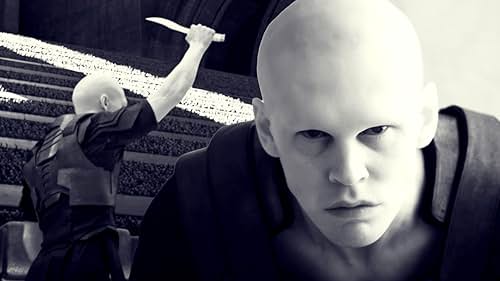In the sprawling cinematic adaptation of Frank Herbert’s seminal science fiction novel “Dune,” director Denis Villeneuve took bold creative steps to bring the richly detailed universe to life. One of the most visually striking choices in “Dune: Part 2” comes during the introduction of the Harkonnen planet of Giedi Prime, where the entire sequence is presented in stark black and white. This decision, while visually stunning, also serves a deeper narrative purpose, as explained by Villeneuve himself.
In an interview with Moviefone, Villeneuve delved into the rationale behind depicting Giedi Prime in black and white. He first contextualized the decision within Herbert’s original source material, highlighting the novel’s exploration of the impact of ecosystems on human culture and behavior. Villeneuve emphasized that the environment shapes the societies and individuals within the “Dune” universe, and Giedi Prime is no exception.
Villeneuve elaborated on his interpretation of Giedi Prime as a world disconnected from nature, describing it as a “plastic world” devoid of natural elements. Drawing inspiration from the book’s themes, he conceptualized the idea that the sunlight on Giedi Prime could offer insights into the psyche of its inhabitants, particularly the members of House Harkonnen. Rather than revealing vibrant colors, the sunlight on Giedi Prime is portrayed as oppressive and otherworldly, creating an eerie black-and-white landscape that reflects the brutalist culture of the Harkonnens.
Collaborating with cinematographer Greig Fraser, Villeneuve realized his vision for Giedi Prime’s unique aesthetic. Fraser utilized a modified ARRI Alexa LF IMAX camera, transforming it into an infrared camera to capture the desired black-and-white imagery. This innovative approach not only enhanced the visual impact of the sequence but also contributed to the sense of Giedi Prime as a distinctly alien world within the “Dune” universe.
While the decision to depict Giedi Prime in black and white was bold, it was not without its challenges. Villeneuve acknowledged the irreversible nature of shooting in this style, emphasizing that there would be no turning back once the decision was made. However, with the support of producer Mary Parent and a commitment to creative vision, Villeneuve forged ahead, confident in his choice to bring Giedi Prime to life in a visually stunning and narratively resonant manner.
In “Dune: Part 2,” the black-and-white sequence depicting Giedi Prime stands out as a cinematic achievement, highlighting the thematic depth and visual innovation of Villeneuve’s adaptation. Through this creative choice, audiences gain a deeper understanding of the Harkonnens and their role within the complex tapestry of the “Dune” universe, setting the stage for a visually stunning and narratively compelling cinematic experience.
FAQ
Why is the planet of Giedi Prime depicted in black and white in “Dune: Part 2”?
In “Dune: Part 2,” director Denis Villeneuve chose to portray the Harkonnen planet of Giedi Prime in black and white during Feyd-Rautha’s introduction sequence. This creative decision was inspired by Frank Herbert’s book and aimed to convey the disconnected, artificial nature of the planet, reflecting the psyche and culture of the characters who inhabit House Harkonnen.
How did cinematographer Greig Fraser achieve the black-and-white aesthetic for Giedi Prime’s sequence?
Cinematographer Greig Fraser utilized a modified ARRI Alexa LF IMAX camera to shoot the sequence in black and white. By turning the camera into an infrared camera, Fraser and Villeneuve were able to capture a unique black-and-white aesthetic that felt alien and otherworldly, enhancing the portrayal of Giedi Prime as a distinct and eerie environment.
What does the black-and-white sequence reveal about the Harkonnens in “Dune: Part 2”?
The black-and-white depiction of Giedi Prime serves to highlight the villainy and brutality of the Harkonnen family, particularly Feyd-Rautha. By presenting Giedi Prime as a desolate, colorless world, devoid of natural elements, the sequence reinforces the sense of the Harkonnens as ruthless and morally uncomplicated antagonists within the story.
How does the black-and-white sequence contribute to the overall themes of “Dune: Part 2”?
The black-and-white sequence in “Dune: Part 2” underscores the theme of environmental influence on human behavior, as explored in Frank Herbert’s book. By visually representing the impact of Giedi Prime’s artificial environment on its inhabitants, the sequence adds depth to the portrayal of House Harkonnen and their role within the larger narrative of the film.
Will Giedi Prime return in potential future installments of the “Dune” series?
While there have been no official announcements regarding future “Dune” films, the portrayal of Giedi Prime in “Dune: Part 2” leaves open the possibility for further exploration of the planet and its significance to the story. Whether or not Giedi Prime will reappear in potential sequels remains to be seen.
